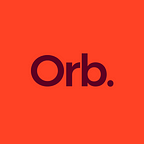From an iconic logo, to a well-loved tone of voice, to an outstanding product. There are so many elements that go into creating a successful brand. When it really comes down to it, branding acts as a sign of quality, and a quick history trip can demonstrate that.
So, let’s take a trip down memory lane, and look at the role that distinctive and memorable branding plays in building brands that can stand the test of time.
A good brand is like a green light
Think of some of the biggest and most memorable brands in the world. Your mind might conjure up brands like Coca Cola, Nike, or Apple. When these names are mentioned, you most likely already have an image of their reputation, heritage and what they stand for. It’s not just global brands either. There are plenty of small niche brands with super fans.
That’s why branding is so important to businesses. It helps people feel like they’re making the right decision when it’s time to get out their wallets. And this isn’t a modern concept created one day in an adland office to shift sales. It goes back way further than that.
The Mesopotamians were ‘branding’ from as early as the 2nd century. They cleverly created personalised stone seals that they used to press into bottle and food stoppers. The distinctive markings meant the local people knew where their food was coming from and whether it could be trusted. Potential buyers could look for the brand and recognise the marque of quality craftsmanship, even if the maker wasn’t there in person to assure them.
Some of the core principles of branding we still use today evolved from this thinking. While there are many ways to think about your brand, there are two fundamental theories that we think help to show how people think, and the value of brand strategy to your business.
Thinking fast and slow
We’ve touched on this before in a previous blog about brand building which you can check out here, but here’s a crash course on the ‘dual process’ theory.
Our brain is wired to take shortcuts. It quickly makes decisions so that we don’t have to think too hard. We make 90% of our decision in this auto-pilot mode. An example would be situations where you don’t have to think too much, like brushing your teeth or driving your car.
This is known as the ‘lazy brain’ theory. Strong branding helps people make decisions quicker. Rather than using the brainpower to weigh things up, they’ve already seen enough about your brand to take a mental shortcut, leading to a faster purchase decision.
Here are some shortcuts good branding helps people take:
· ‘I’ve bought that one before, so I know it’s good. I’ll stick with it.’
· ‘I saw the advert for these on the train. I think I’ll give it a try.’
· ‘People always say they’re reliable, so I’ll go with them.’
Follow the white rabbit
Associative network theory (or the white rabbit theory) focuses on the power of words, feelings and colours, and how these elements influence the way people think and feel about a brand.
Going back as far as 960AD, Chinese sewing needle brand White Rabbit used the symbol of a rabbit in their work and is one of the oldest known examples of branding. In Chinese culture, the white rabbit symbolises good luck. They cleverly leveraged this association and introduced this into their messaging and products, leading to a brand that’s still going strong to this day.
The power of brand strategy
Brand strategy simply means creating principles and distinctive elements that make sure your brand stays top of mind when it comes to purchase. And it should be your north star when it comes to marketing. There are four key elements that make up a strong brand strategy: consistency, memorability and distinctiveness.
Consistency in your brand messaging means people need to use less brain power to understand who you are and what you do. People will already have an idea in mind about what to expect. Which makes choosing you over a competitor an easier choice.
Memorability means your brand is easy to recall or recognise when people need to. A good test of this might be your logo or your tone of voice. If someone saw your logo or an ad without any other context, would they know exactly who you are? Memorable branding makes it easier for people to recall your brand in a sea of competition.
Distinctiveness is perhaps the most important aspect. When people see your messaging, do they know that it comes from your brand? Does it feel like it could only have come from you? This is where taglines, logos, imagery styles, and visual identity can help your brand stand out from the crowd.
Simplicity is about keeping things crystal clear, making it easy for people to understand. Way too many businesses aren’t ruthless enough with what they want to say, trying to cram everything into their messaging. This tends to overload audiences, and so the core message fails to connect because there’s too much to absorb.
Connect the things which matter to your business (your goals, your mission and your vision) with the things that matter to your customers and you’re on to a winner.
Wrapping it up
A good brand is like a green light. It gives your customers confidence choosing you over your competitors and the more distinctive you are, the easier you make it for your customers to choose you. Take the time to look at the elements that make your brand stand out because these are your secret weapons in building a brand that can stand the test of time.
